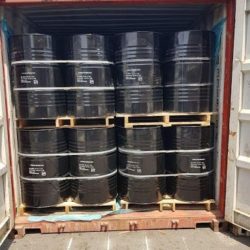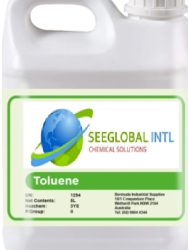Description
The Petroleum Coke category consists of two substances; green coke and calcined coke. These two substances are grouped together in a category based on their similarity of manufacturing processes which results in similar physical chemical characteristics and chemical composition. The principal difference is the amount of residual hydrocarbon (also termed volatile matter) in the two products. Both substances are a black-colored solid produced by the high pressure thermal decomposition of heavy (high boiling) petroleum process streams and residues. Green coke is the initial product from the cracking and carbonization of the feedstocks to produce a substance with a high carbon-to-hydrogen ratio and undergoes additional thermal processing to produce calcined coke. The additional processing removes volatile matter and increases the percentage of elemental carbon, which results in a lower potential for toxicity for calcined coke.
To meet the HPV Challenge, the Testing Group has thoroughly evaluated the substances within Petroleum Coke category and has made all of the reliable human health and ecological hazard data available to the public. The hazard potential for the petroleum coke category has been characterized by evaluating existing data, testing green coke to fill data gaps, then “reading across” the green coke results to the other category member, calcined coke. This is justified because green coke contains higher levels of volatile matter, and therefore, it is considered to have more potential to cause human or environmental hazards in comparison to calcined coke.
Production
Calcinable grade coke or Green Petcoke, also referred as RPC l.
Fuel Grade Petcoke is produced IN refineries.
|
Application as |
End use |
|
Feed Stock/ Fuel Use |
Cement |
|
Lime Kilns |
|
|
Gasification units |
|
|
Industrial Boilers |
|
|
Carbon Source |
Electrodes for electrometallurgical industries |
|
Synthetic Graphite |
|
|
Aluminum Anodes |
|
|
TiO2 pigments |
|
|
Carbon Raiser |
|
|
Silicon Carbide |
|
|
Foundaries |
|
|
Coke Ovens |
Benefits of Fuel grade Petcoke over coal:
- Petcoke is a direct replacement of coal as a fuel but has higher calorific value (>7800Kcal/Kg as compared to 3500-4500 Kcal/Kg for coal).
- Petcoke is hydrophobic as compared to coal which is hydrophilic, thereby having edge during rainy season.
- Being solid fuel, Petcoke has low volatile matter thus no evaporation losses. Helps saving in transportation cost due to higher density compared to liquid fuels.
- Low ash content.
CALCINATED PETCOKE
Petroleum coke is a by-product of the coker process in the oil industry. In its raw form, it is also called “green coke” or green petroleum coke. Calcined petroleum coke is an important industrial commodity that links the oil and the metallurgical industries as it provides a source of carbon for various metallurgical applications including the manufacture of anodes for the aluminum pot liners and for graphite electrodes. Most of the calcining of petroleum coke is carried out in rotary kilns.
Calcined petroleum coke (CPC) is created from green petroleum coke (GPC), a by-product of refining crude oil. While CPC can be created using a number of processes — including rotary kiln, hearth and vertical shaft technologies — the high-temperature conversion from green coke to calcined coke alters the material in key three ways:
- Drying
- Release of residual hydrocarbons
- Densification
This is accomplished as the coke is heated from ambient temperature to a finishing temperature of about 1,350°C. Although initial start-up of the process uses an external fuel such as natural gas or fuel oil, the vast majority of heat required to sustain the process after start-up comes from the in-situ combustion of the residual hydrocarbons inherent in the coke, and only oxygen is needed to maintain that combustion.
CPC is an essential ingredient in the production of aluminum. In fact, every ton of aluminum needs approximately 0.4 tons of CPC, making Rain Carbon a critical “carbon link” between the refineries and the aluminum industry. CPC also is in great demand for the production of titanium dioxide (TiO2).
A similar process is applied to make petcoke from petroleum feedstock. Depending on the coking operation temperatures, the length of coking time and the quality of the crude oil feedstock, one of several grades of petcoke can be produced. These are:
- Sponge coke, the most common type of regular-grade petcoke, used as a solid fuel;
- Needle coke, a premium-grade coke made from special petroleum feedstock, used in the manufacture of high-quality graphite electrodes for the steel industry;
- Shot coke, produced from heavy petroleum feedstock, used as fuel, but less desirable than sponge coke;
- Purge coke, produced by flex coking, used as a fuel in coke-burning boilers; and
- Catalyst coke, carbon deposited on catalysts, used in various refining processes and burned off and used as a fuel in the refining process; not recoverable in a concentrated form.







Reviews
There are no reviews yet.